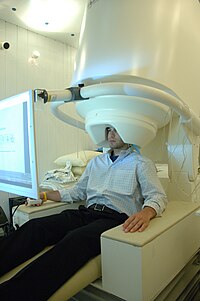
Photo from wikipedia
Among some of the current uses of dc superconducting quantum interference devices (SQUIDs) are qubit readouts and sensors for probing the properties of quantum materials. We present a gradiometric niobium… Click to show full abstract
Among some of the current uses of dc superconducting quantum interference devices (SQUIDs) are qubit readouts and sensors for probing the properties of quantum materials. We present a gradiometric niobium SQUID design with state-of-the-art sensitivity in the femtotesla range, which can be tuned to specific readout requirements. The sensor is a next-generation fractional SQUID with a tightly optimized input coil and a combination of various measures known for restraining parasitic resonances and other detrimental effects. Our design combines the practical usefulness of well-defined pickup loops for well-defined imaging kernel and tunable probing applications with a fractionalization approach to reduce undesired inductances. In addition, our modeling predicts small dimensions for these planar sensors. These features make them of relevance for material studies and for the detection of magnetic fields in small volumes, e.g., as part of a cryogenic scanning quantum imaging apparatus for efficient diagnostics and quantum device readouts. This manuscript will benefit scientists and engineers working on quantum-computing technologies by clarifying potential general misconceptions about dc SQUID optimization alongside the introduction of the flexible compact dc SQUID design.
Journal Title: Physical review applied
Year Published: 2020
Link to full text (if available)
Share on Social Media: Sign Up to like & get
recommendations!